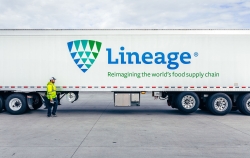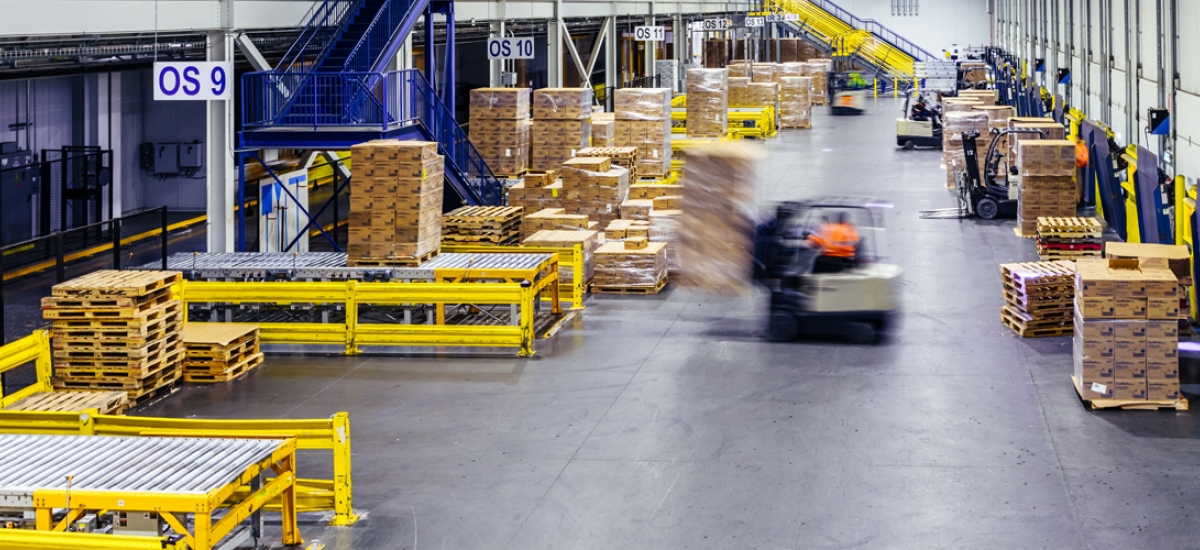Automation is a Solution for the Current Labor Market
Automation is – A series on the challenges and opportunities in food logistics.
July 22, 2021
Challenge #1 – Labor Shortages and Volatility
The global jobs gap is expected to reach 75 million this year as employers around the world struggle to find labor post-COVID-19 (ILO, 2021).
Labor growth has fallen behind economic growth.
As the worldwide economy attempts to recover from the devastating effects of COVID-19, the number of workers actively seeking employment isn’t keeping pace. Between the United States and the European Union, it is estimated that 12.2 million people lost their jobs in the first three quarters of 2020 (Bennett, 2021). Millions of these displaced workers are not returning to the post-pandemic workforce for several reasons, including safety concerns, childcare and wage demands. In an economy that has the momentum to recapture pre-pandemic economic highs, this labor shortage could not be happening at a more inopportune moment.
- U.S. government preliminary jobs data for April showed that transportation and warehousing employment declined by 74,000 jobs during the month, following gains in February and March (Anthes, 2021).
- More than half of employees globally responded to a recent survey by saying they’d quit their jobs if not given post-pandemic flexibility in hours and days.

The global jobs gap is expected to reach 75 million this year
Labor unpredictability is now commonplace.
The only predictability, as it applies to supply chain labor at this moment, is unpredictability. Attempts at maintaining a “rightsized” labor force can be regularly disrupted by unpredictable forces, which can overwhelm any supply chain. And as soon as one is adequately staffed, labor needs seemingly dip. Ultimately, finding and managing the labor necessary to meet fluctuating demand can be quite difficult.
As we’ve observed with recent cycles of panic-buying, nobody knows when the next geopolitical or climate-driven demand on the supply chain will pop up. Consumers tend to be less brand-loyal, with the ability to comparison shop online and with easy access to customer reviews – whatever product subject to social media buzz today can end up sitting in a warehouse tomorrow. Consumer demand-driven changes in labor requirements continue to be a challenge.
Solution: Creating labor and workflow agility through real-time insight.
Automation and other data- and software-driven technologies allow players in the cold chain to stay current and proactive by identifying demand signals and staffing accordingly to inform rapid operational decision-making. Intelligent labor – or operations that are tracked, analyzed and adjusted in response to real-time data – is now essential in today’s warehousing environment.
It's imperative to not only find the instrumentation for measuring tasks on the floor but to have the processes in place to make the data actionable. With this enhanced real-time visibility, warehouse operators will be able to see where they can reallocate their labor force on the spot to fulfill more orders each day.
Automation also allows for an agile workflow by shortening the time for any specific task. Therefore, when disruptions occur, warehouse teams can focus on solving them, knowing that previously longer, manual processes will still flow properly.

A manual warehouse that requires 450 employees would require only 170-180 with automation.
Automation in Action: Lineage Link – Keeping available labor as efficient and safe as possible.
Launched in 2020, Lineage Link® – a fully integrated platform that provides unprecedented supply chain visibility and intelligence – is a game-changer for supply chain professionals looking to rapidly respond to demand fluctuations, new safety protocols and the resulting limitations on labor.
Elliott Wolf, VP & Chief Data Scientist explains how:
One of the primary sources of waste that manifested during COVID-19 panic-buying was the rapid shift from restaurants to retail (grocery), which resulted in a lot of spoilage. The supply chain couldn’t move fast enough to repackage or reroute the material, and product rotted in the interim. Suppliers were also forced to limit on-site staff, as well as interaction with transportation staff, to follow social distancing mandates.
To answer this challenge, we launched our customer experience platform, Lineage Link. Lineage Link helped customers navigate sudden shifts much quicker by giving them access to real-time insights they needed to seamlessly reengineer their distribution networks. Drivers were requested to download the Link app, which made it possible to track and report on their progress and allowed them to check in and work through docking and storage with as little in-person interaction as possible. The platform also allowed our schedulers to work remotely and provided our carriers and customers self-service options. By introducing self-service options, Lineage Link allows our customer care team to focus on exceptional customer service, and the added visibility that Link can provide on all inbound and outbound activities allows the care management team to more effectively plan labor, which is increasingly a scarce commodity. In the future, Lineage Link will allow our warehouse Team Members and customers to act more strategically and operate more efficiently.
The worldwide labor concerns of today come at a time of unprecedented consumer demand. Moving forward in the series, we’ll explore how the confluence of expansive brand selection, brand varieties and the explosion of home delivery has forever changed the cold chain upward movement.
Sources:
Anthes, R. (2021, May 7). Sharp Decline in Monthly Job Growth Stuns. Thebalance.com. https://www.thebalance.com/jobs-report-april-2021-5183974
Bennett, J. (2021, April 15). Fewer jobs have been lost in the EU than in the U.S. during the COVID-19 downturn. Pewresearch.com. https://www.pewresearch.org/fact-tank/2021/04/15/fewer-jobs-have-been-lost-in-the-eu-than-in-the-u-s-during-the-covid-19-downturn/
International Labor Organization. (2021, June 2). Slow jobs recovery and increased inequality risk long-term COVID-19 scarring. ILO.org. https://www.ilo.org/global/about-the-ilo/newsroom/news/WCMS_794834


